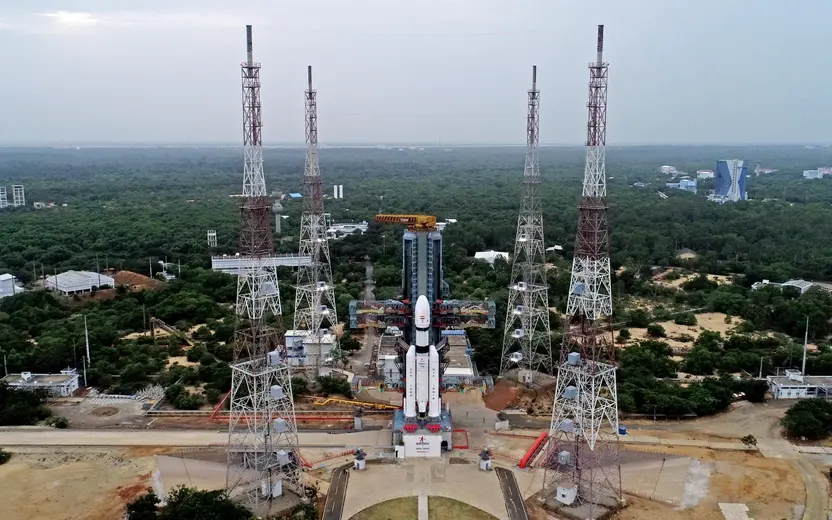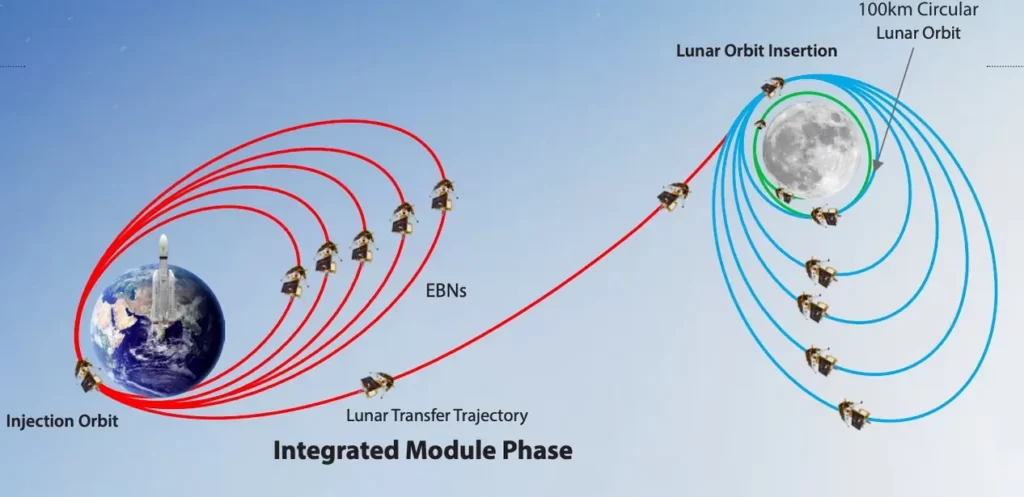Chandrayaan 3 cannot directly land on the Moon from an Earth launching pad without going into orbit first due to several reasons. Lets look into factors like Escape velocity, Fuel, Trajectory planning and Lunar landing maneuvers.

Escape velocity:
The escape velocity required to leave Earth’s gravitational pull is approximately 11.2 kilometers per second (6.95 miles per second). This speed is necessary to overcome the gravitational force of Earth and enter a trajectory that will take the rocket to the Moon. Directly landing on the Moon without going into orbit first would require a rocket to achieve this escape velocity from a standing start, which is currently beyond the capabilities of existing rocket technology.
Fuel requirements:
Reaching the Moon requires a significant amount of fuel. Going directly from the Earth’s surface to the Moon without entering orbit would require carrying all the necessary fuel for the entire journey. This would make the rocket extremely large and heavy, posing significant engineering challenges. By going into orbit first, rockets can take advantage of gravity assists and perform orbital maneuvers to conserve fuel, making the overall mission more feasible.
Trajectory planning for Moon Mission:
The path to the Moon involves careful trajectory planning. Rockets typically use a technique called a Hohmann transfer orbit to efficiently travel from Earth to the Moon.

This involves launching into a low Earth orbit and then performing a series of maneuvers to gradually raise the orbit until it intersects with the Moon’s orbit. By going into orbit first, the rocket can adjust its trajectory and timing to ensure a successful lunar landing.
Lunar landing maneuvers:
Landing on the Moon requires precise maneuvering and deceleration to counteract the Moon’s gravity. Directly landing from Earth would require carrying additional fuel to perform these maneuvers, making the rocket even larger and more complex. By going into orbit first, the rocket can release a lunar lander specifically designed for the final descent and landing, which can be optimized for the lunar environment.
To conclude, going into orbit first allows rockets (Chandrayaan 3) to conserve fuel, take advantage of gravitational assists, and perform precise trajectory planning and lunar landing maneuvers. These factors make the overall mission more achievable and efficient compared to attempting a direct landing from an Earth launching pad.

